Coral reefs are one of the most important ecosystems on our planet. Thousands of species rely on reefs for survival, and millions of people worldwide also depend on coral reefs for food, protection, and jobs. These unique and sensitive habitats can be devastated by marine debris. Reefs can be impacted by debris that can smother, crush, or break off pieces of coral. Since corals grow very slowly, recovery from any damage caused by marine debris, no matter how small, can take a very long time.
We can protect coral reefs by preventing debris from entering our environment, and by raising awareness about their vulnerability and importance - and you can accomplish both with this engaging upcycling project! Check out these resources to help students learn about reefs, and then create your own coral reef with upcycled materials!
- Coral Reef Ecosystems Resource Collection from the NOAA Office of National Marine Sanctuaries
- Coral Reef Facts from the NOAA Coral Reef Conservation Program
- Coral Basics from Flower Garden Banks National Marine Sanctuary
This reef is inspired by the sponges, cnidarians, and other species of Flower Garden Banks National Marine Sanctuary. The craft itself was inspired by children's author and illustrator Everett Taylor at Living Porpoisefully, LLC.
Supplies Needed:
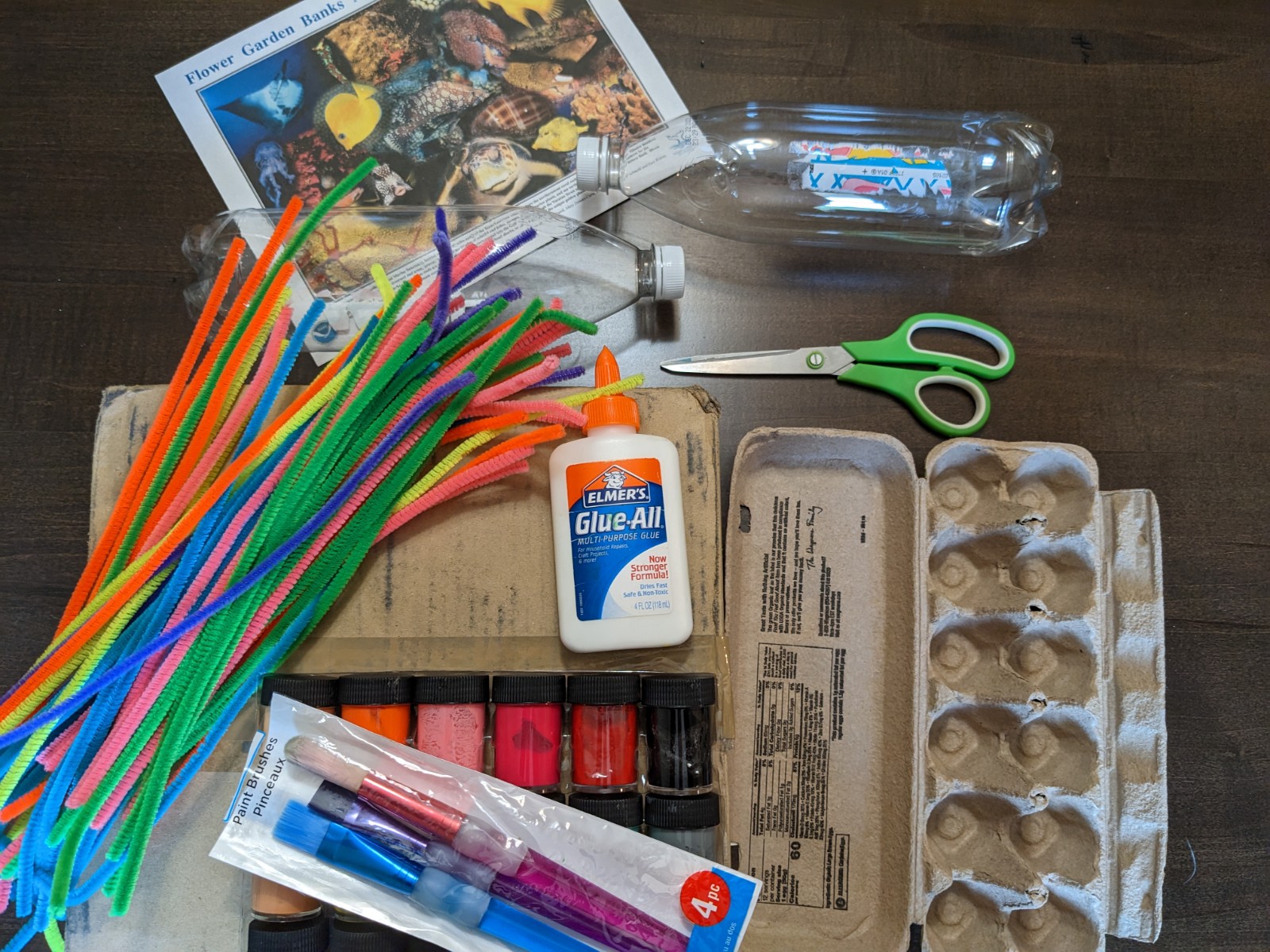
Your exact supply list may vary depending on the materials you have available and the reef species you'd like to create.
- Scissors (child-safe scissors won't be strong enough to cut the bottles, so the bottle cutting should be completed by adults or with adult supervision)
- Glue (while white glue is pictured here, I ended up using hot glue to get all of the materials to stick. If using hot glue, ensure that gluing is completed by adults or with supervision)
- Plastic beverage bottles (clean and dry)
- Egg carton
- Bubble wrap
- Mesh produce bag
- Paints
- Pipe cleaners or string
- A cardboard box and/or a few paper plates
- Critter Collage from Flower Garden Banks National Marine Sanctuary
Steps:
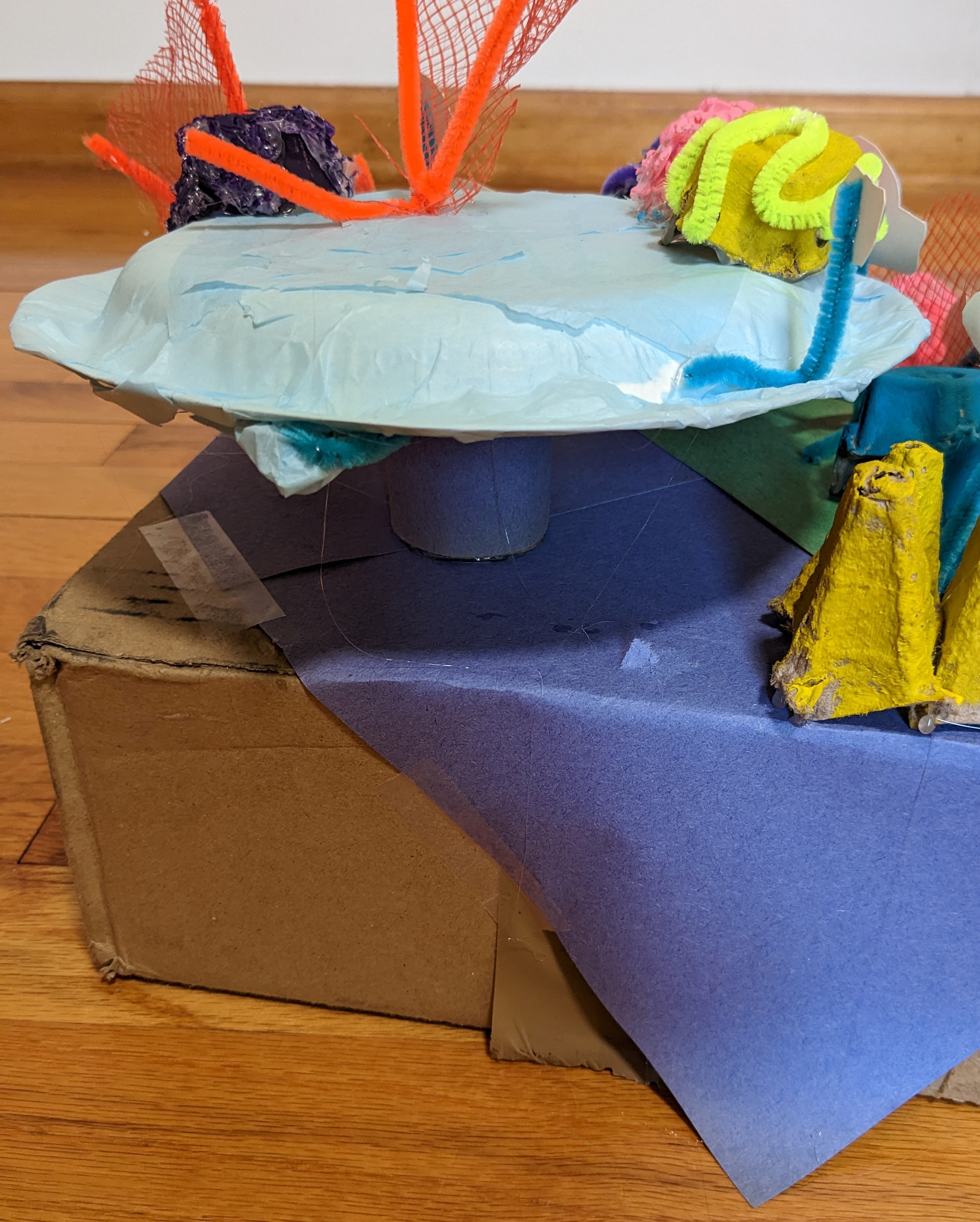
Set up the base for your reef:
- I used a short cardboard box for the first layer, and a small paper plate for a second layer.
- You can also use paper plates stacked with paper towel or bath tissue rolls to add height - or just one plate!
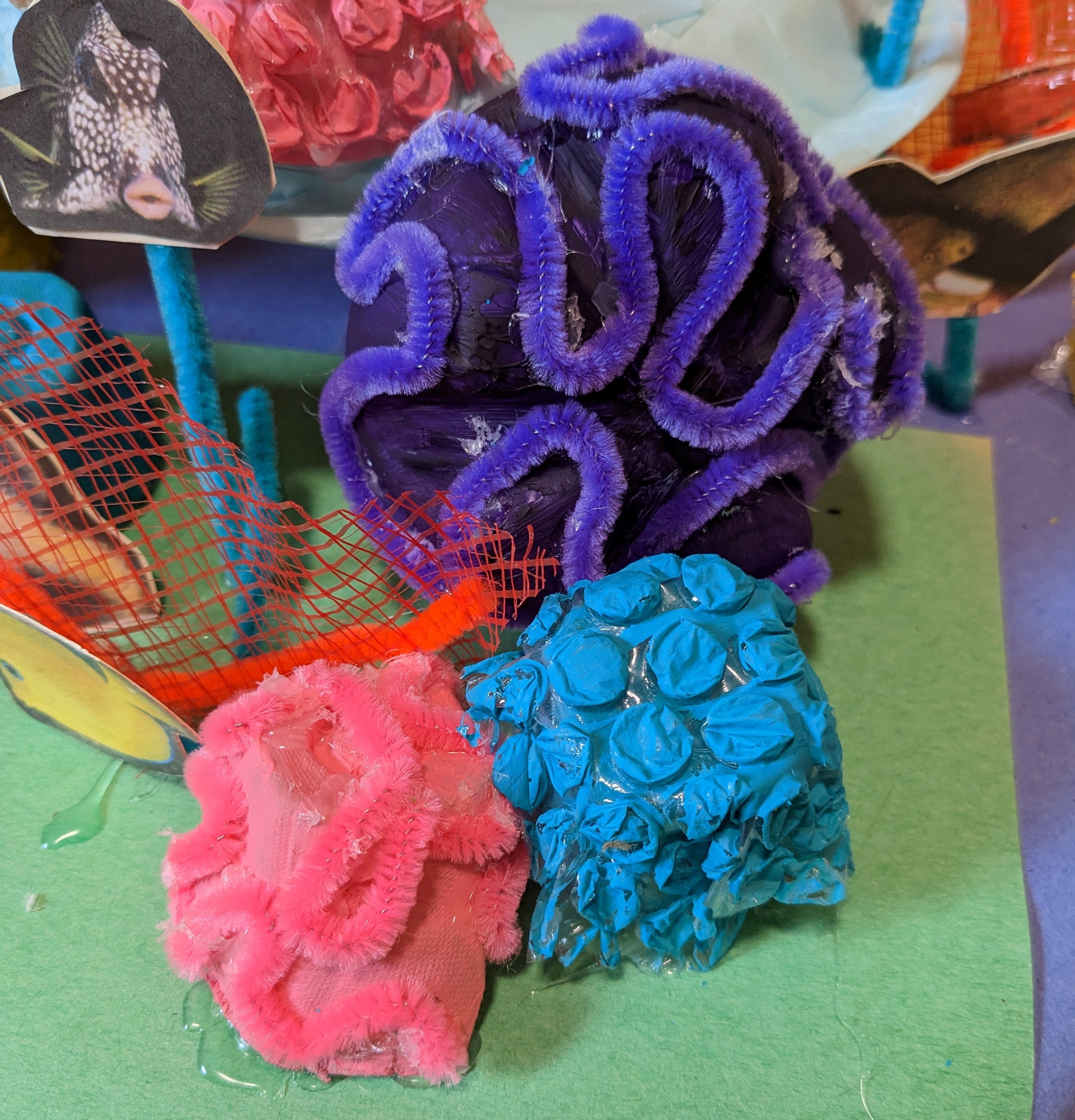
For brain corals:
- Cut apart your egg carton, or cut the bottom off of your plastic bottle.
- Paint the egg carton or bottle piece.
- Glue pipe cleaners or string around the egg carton or bottle base.
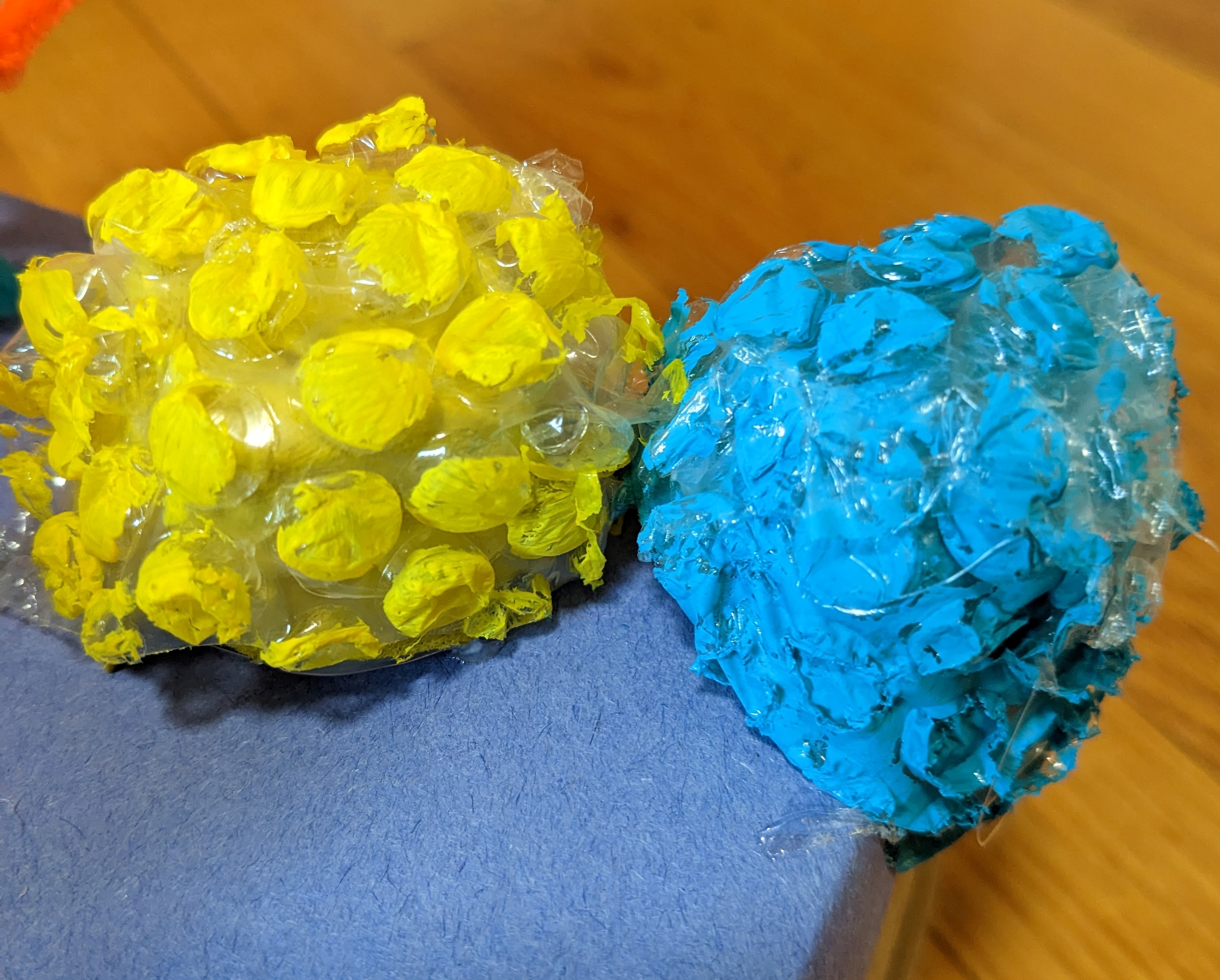
For star corals:
- Paint a few more egg carton or plastic bottle pieces.
- Cut out a small piece of bubble wrap, and paint it in a matching color.
- Glue the bubble wrap pieces onto the egg carton or plastic bottle base.
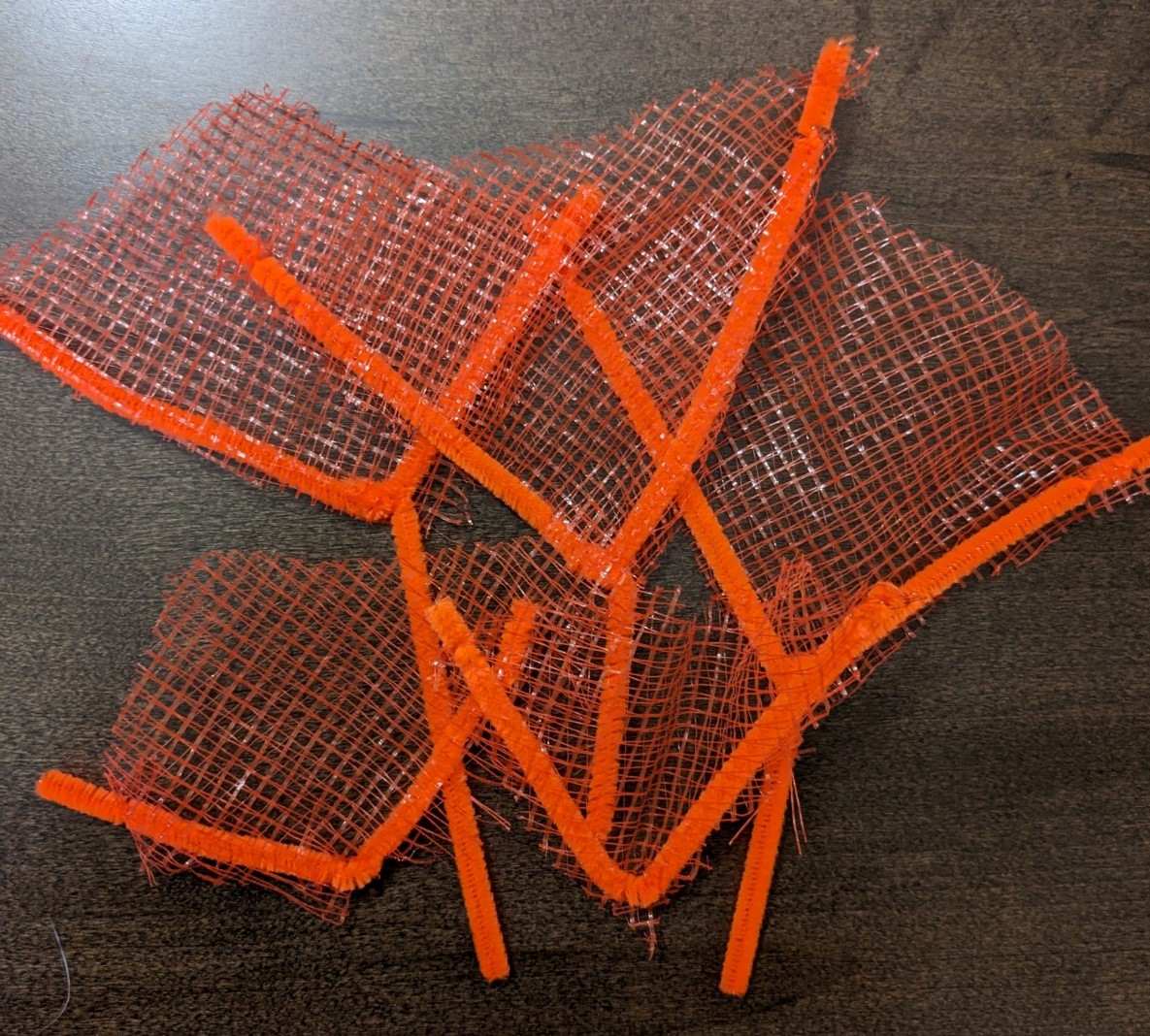
For sea fans:
- Cut apart fan-shaped pieces of mesh produce bag.
- Line the pieces with pipe cleaners to help them stand up.
Create as many types and colors of coral as you would like! You can draw inspiration from a local environment, one of the many national marine sanctuaries, or your imagination. Other types of reef life you can make with these materials include:
- Sea sponges
- Staghorn corals
- Anemones
- And more!
Finishing up the reef:
- Cut out each species from the Critter Collage and glue a piece of thick paper or cardstock and a toothpick or pipe cleaner on the back.
- Place each coral, sponge, sea fan, critter, etc. onto the reef base!
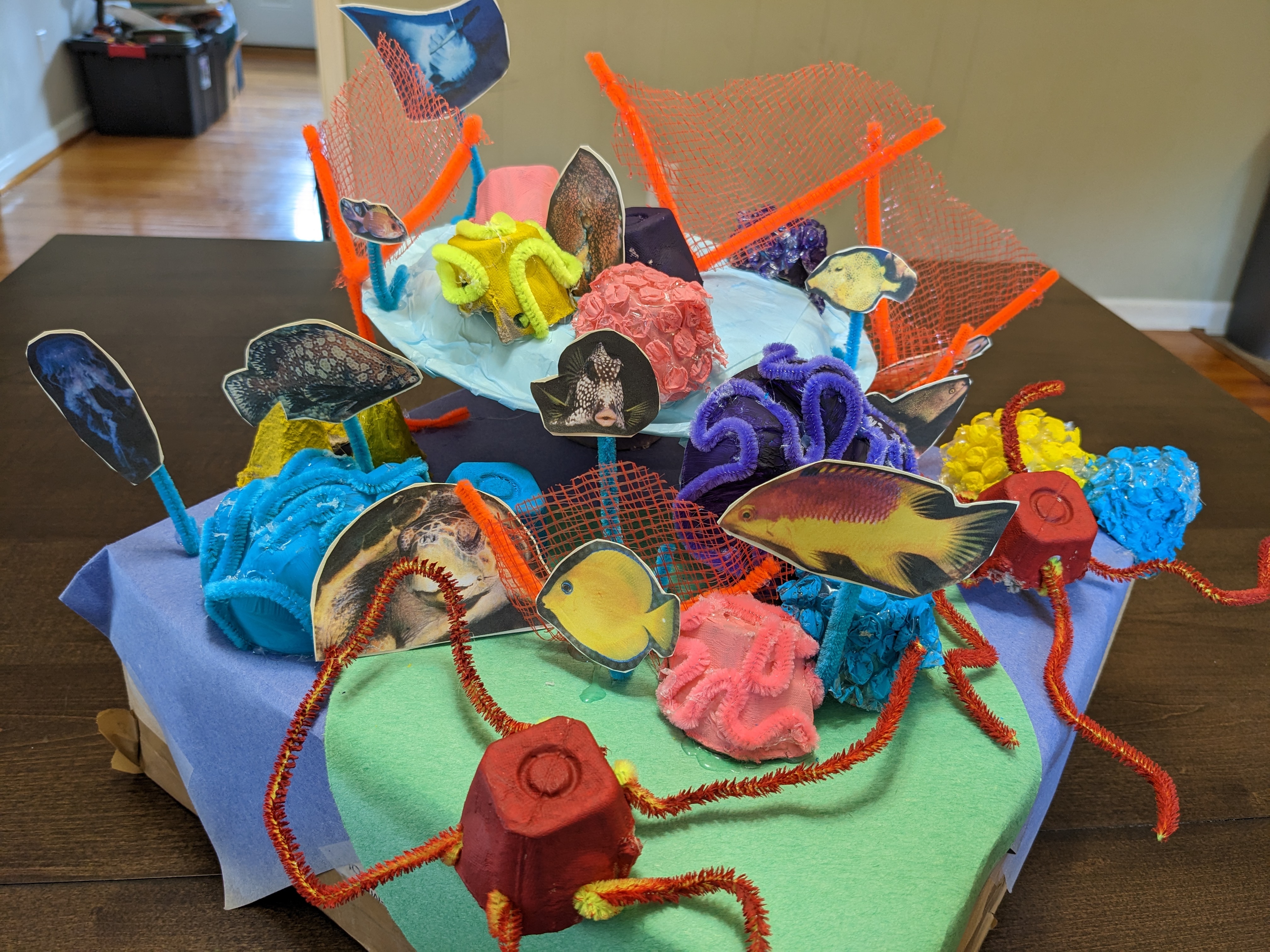
 An official website of the United States government.
An official website of the United States government. 
